Dog Report Cards: Benefits, Examples and Templates for Your Pet Business
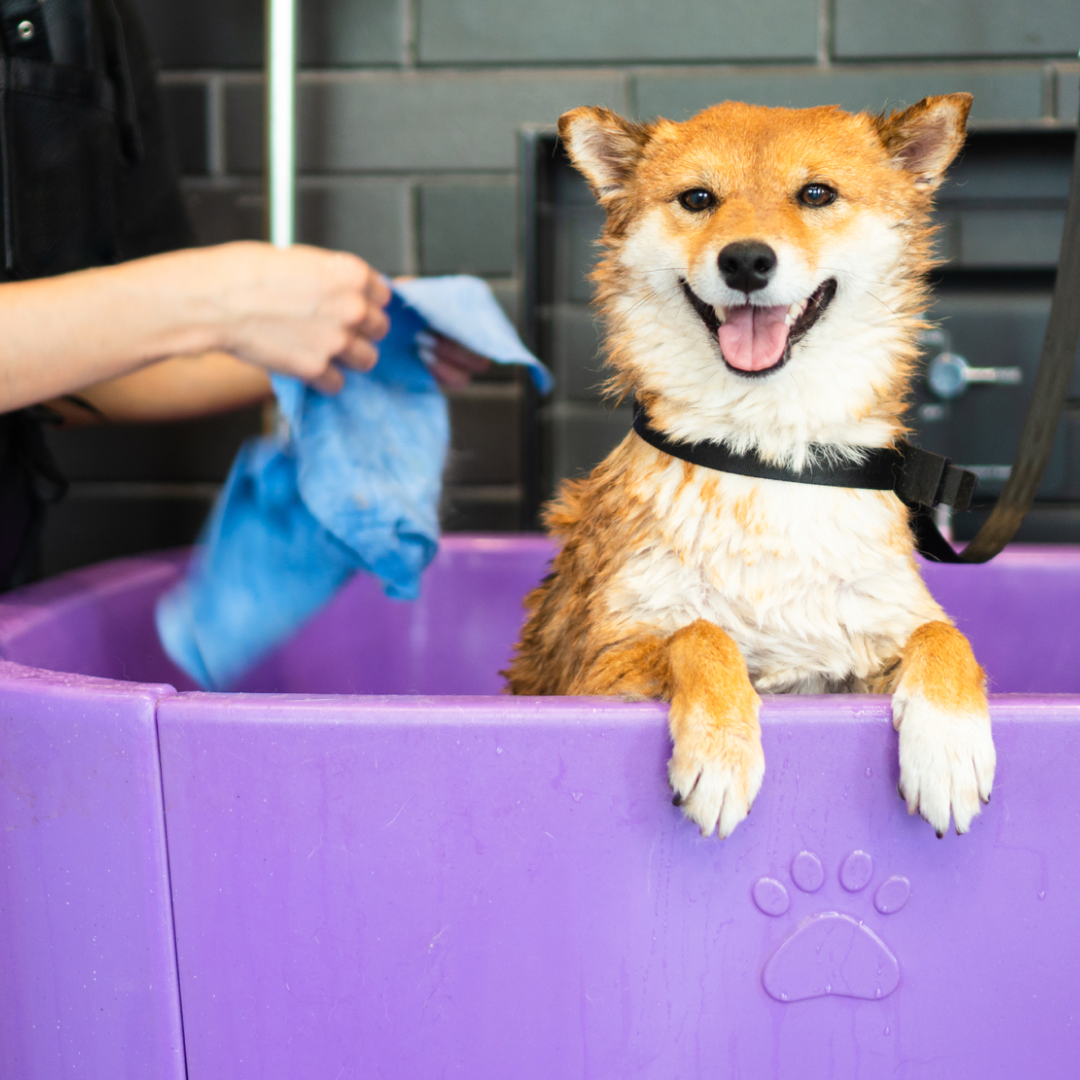
What is a Dog Report Card?
Using report cards for dog daycare and groomers serves a dual purpose of enhancing communication and fostering a deeper understanding of each furry client. These detailed assessments provide pet parents with valuable insights into their dog's daily activities, social interactions, and overall well-being during their time at the facility. By transparently sharing information on behavior, health, and any special preferences, report cards empower both caregivers and pet owners to collaborate effectively, ensuring a tailored and enriching experience for every canine attendee. Dog daycare report cards can go into how pups played with each other, if they ate their provided meals, and how much they rested. Dog grooming report cards can dig into how well dogs tolerated certain grooming procedures, if the groomer noticed any infections, dental problems, or matting, and if the groomer noticed any sensitivities to certain products. A dog boarding report card might include criteria from daycare plus how the dog tolerated being in kennels overnight.
Benefits of a Dog Report Card
Dog report cards can help increase customer retention, provide behavioral insights, create a competitive advantage, give legal protection, and serve as business intelligence.
- Dog report cards increase retention. Dog report cards can create a connection between your staff and pet parents, increasing retention. For example, if a daycare attendant notes a dog didn’t eat their meal, this could be a signal to the owner that it’s time to change up their dog food. Your staff gets to show their expertise by pointing this or other problems out, and the client will appreciate your staff noting this, making them feel that your staff cares about their unique furbaby as an individual, hopefully making them want to come back for more sessions with you.
- Dog report cards let staff members provide behavioral insights. If a dog has been boarded more than once and was shy on their first visit but more outgoing the next, the staff member can note that and communicate that to owners.
- Report cards can serve as an important distinction from competitors. If your dog daycare is the only one that offers report cards, highlight that. If your report cards follow a unique formula or have unique content from other businesses’ report cards, mention that as well.
- Dog report cards can provide legal protection. If a dog owner unfortunately has a complaint about another dog or their owner and it turns into a “he said, she said” conversation, your report cards serve as a clear objective record of any potential conflict.
- Dog report cards create an internal feedback loop, which is a key part of business intelligence. As a team, you can look at issues that come up more often on report cards (dogs fighting with each other, dogs refusing to eat, et cetera) and figure out how to target these common issues, improving your business internally.
What to Include on a Dog Report Card?
Dog report cards can be physical or digital, and encompass whatever content you find valuable for pet parents and repeatable for staff. Your report cards could include a range of items, tailored to specific dogs’ needs or the type of business you run. Below are some common criteria for dog report cards.
- General Information. You can note information like the dog’s name, breed, age, the date of service, owner’s name and contact information, and any owner instructions for the dog.
- Activities. Note what programs the dog participated in (grooming, boarding, daycare) and any extras/upsells the owner opted the pet into. Note any special activities as well: did the dog go for a run with trainers? Did they participate in agility exercises?
- Health and Wellbeing. Note if the dog had or received any injuries, changed their appetite, or received any medication if applicable.
- Bathroom Habits. Note if anything was unusual about their urine or stool.
- Behavior Notes. Describe what the dog’s behavior was like interacting with handlers and other dogs (shy, friendly, et cetera) and if they noticed any potentially troublesome behaviors like excessive barking, excessive humping, or separation anxiety.
- Meal/Eating Notes. Note whether the dog ate their provided meals, how much they ate, what treats they received if any, and if they had any allergic reactions to food or treats.
- Sleep Notes. Note how much the dog napped if they were at your facility for daycare, and for boarding if they slept through the night and where they slept.
- Grooming Notes, If Applicable. Note what grooming services were received and the condition of the dog’s coat, teeth, and ears – noting potential issues like infections or matting.
- Recommended Training or Feedback. If your staffers are concerned about progress in a dog’s training, their behavior, or even want to give praise for skills pets are getting better at, they can note this on their report card.
- Photos. Who doesn’t love photos and videos of their pets having fun and enjoying their stay, especially if they’re getting dressed up, playing with cute toys, or just got groomed?
Dog Report Card Template
Below is an example of a simple dog report card you can tailor to your business. Feel free to jazz up the text with graphic design and your business logo.
Name of Pet:
Name of Owner:
Date of Service:
Services Performed:
Activities:
Health and Wellbeing:
Bathroom Notes:
Eating Notes:
Sleep Notes:
Feedback, if Any:
Dog Report Card Examples
Name of Pet: Charlie
Name of Owner: Anna
Date of Service: 3/21/2024
Services Performed: Doggy Daycare
Activities and Behavior: Charlie played with his fellow dogs inside and outside, learning the agility course, and performing in a doggy fashion show. He was very friendly towards dogs and staff.
Health and Wellbeing: No abnormalities: Charlie had a lot of energy.
Bathroom Notes: No abnormalities. Charlie went to the bathroom outside.
Eating Notes: Charlie ate his full meal today and had some freeze-dried chicken treats.
Sleep Notes: Charlie rested for 45 minutes after lunch.
Feedback, if Any: He had a little separation anxiety after his owner left. If the owner would like to help ease this, we suggest looking at Karen Overall’s Relaxation Protocol.
Name of Pet: Gregory
Name of Owner: Tom
Date of Service: 2/11/2023
Services Performed: Dog Boarding
Activities and Behavior: Gregory was a little shy around his fellow dogs. He enjoyed playing tug-of-war with his trainers and sniffing around outside.
Health and Wellbeing: We administered Gregory’s flea, tick, and heartworm medicine.
Bathroom Notes: Gregory’s stool was slightly loose but not too concerning..
Eating Notes: Gregory wasn’t very hungry today, but the trainers coaxed him to eat half his meal..
Sleep Notes: Gregory slept in his kennel the whole night.
Feedback, if Any: Gregory could probably use more socialization with other dogs. We suggest taking him to dog runs.
PetExec Report Cards
You may be thinking that making pet report cards seems like a lot of work. But with business software like PetExec, you can create beautiful report cards easily. You can make a template that has any text field you want, plus cute cover images that tie the report card together. You can then decide how you want the report card to look when it’s emailed out to owners.
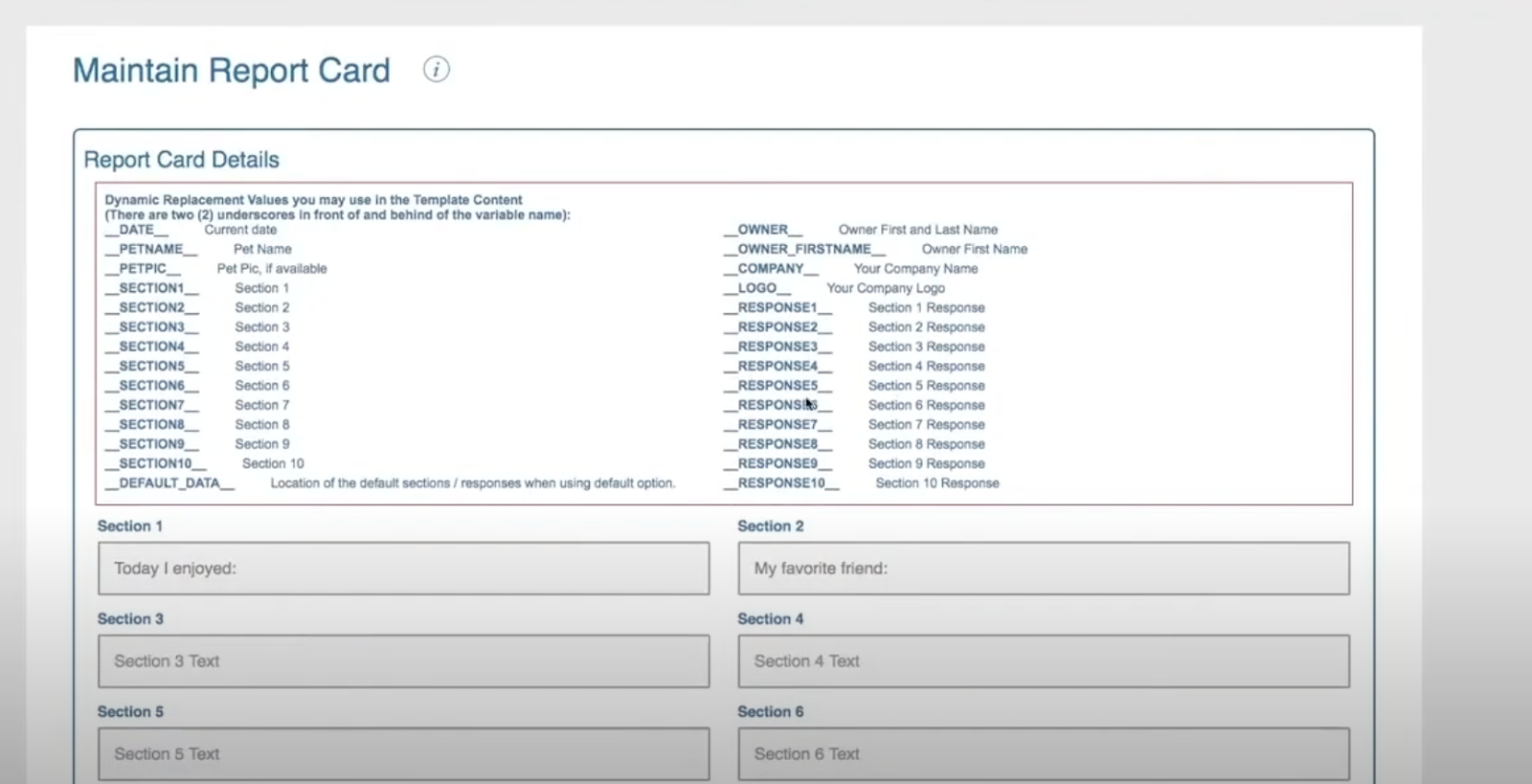
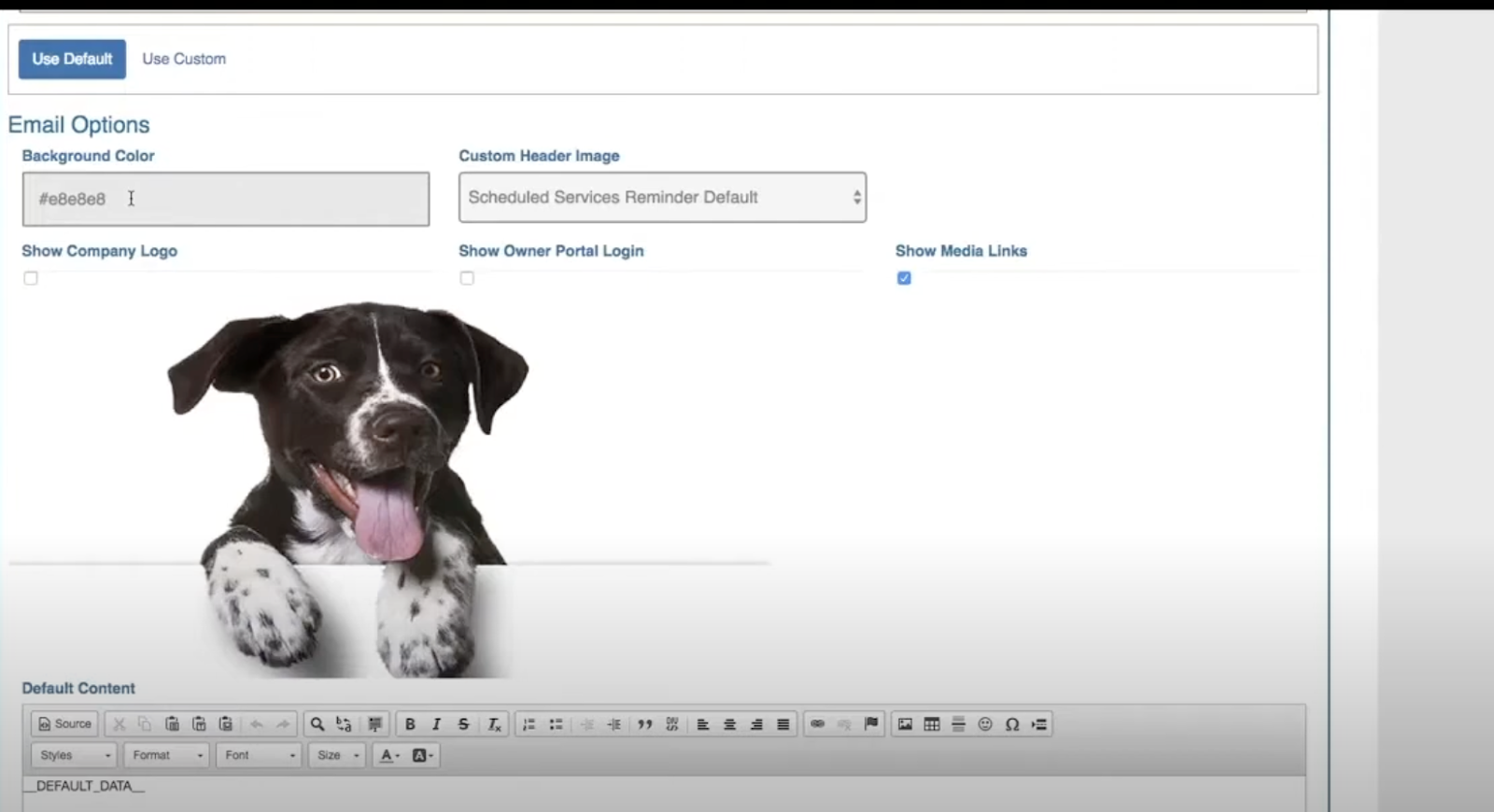
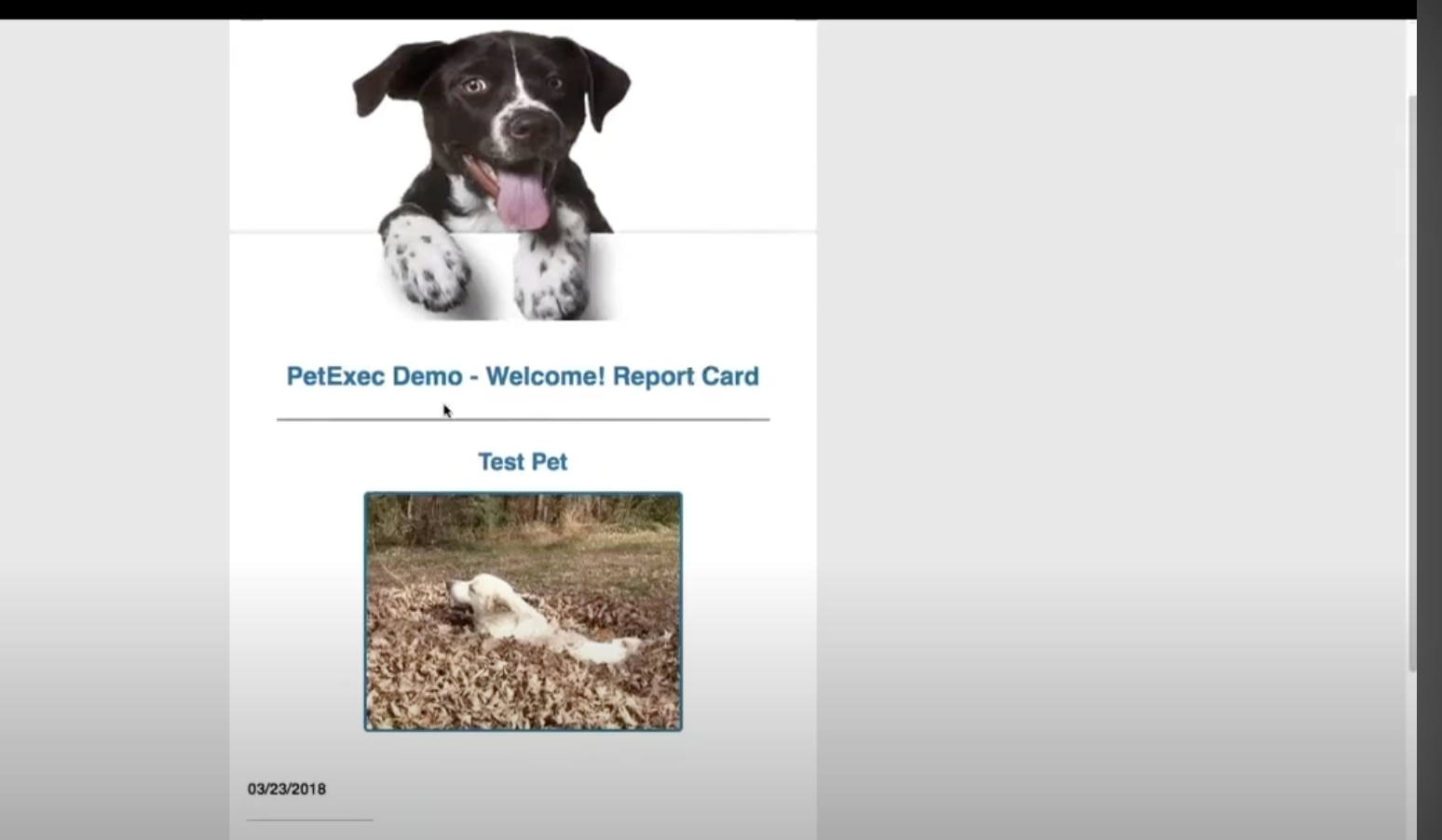
Integrating Report Cards into Your Pet Business
Once you’re ready to create and send out report cards, you can select a pet and hit “modify report card.” Then you can quickly add details and a pet photo. With a few clicks, it’s easy to integrate report cards into your business, building owners’ trust in you, and fostering better communication between you, your staff, and pet parents.
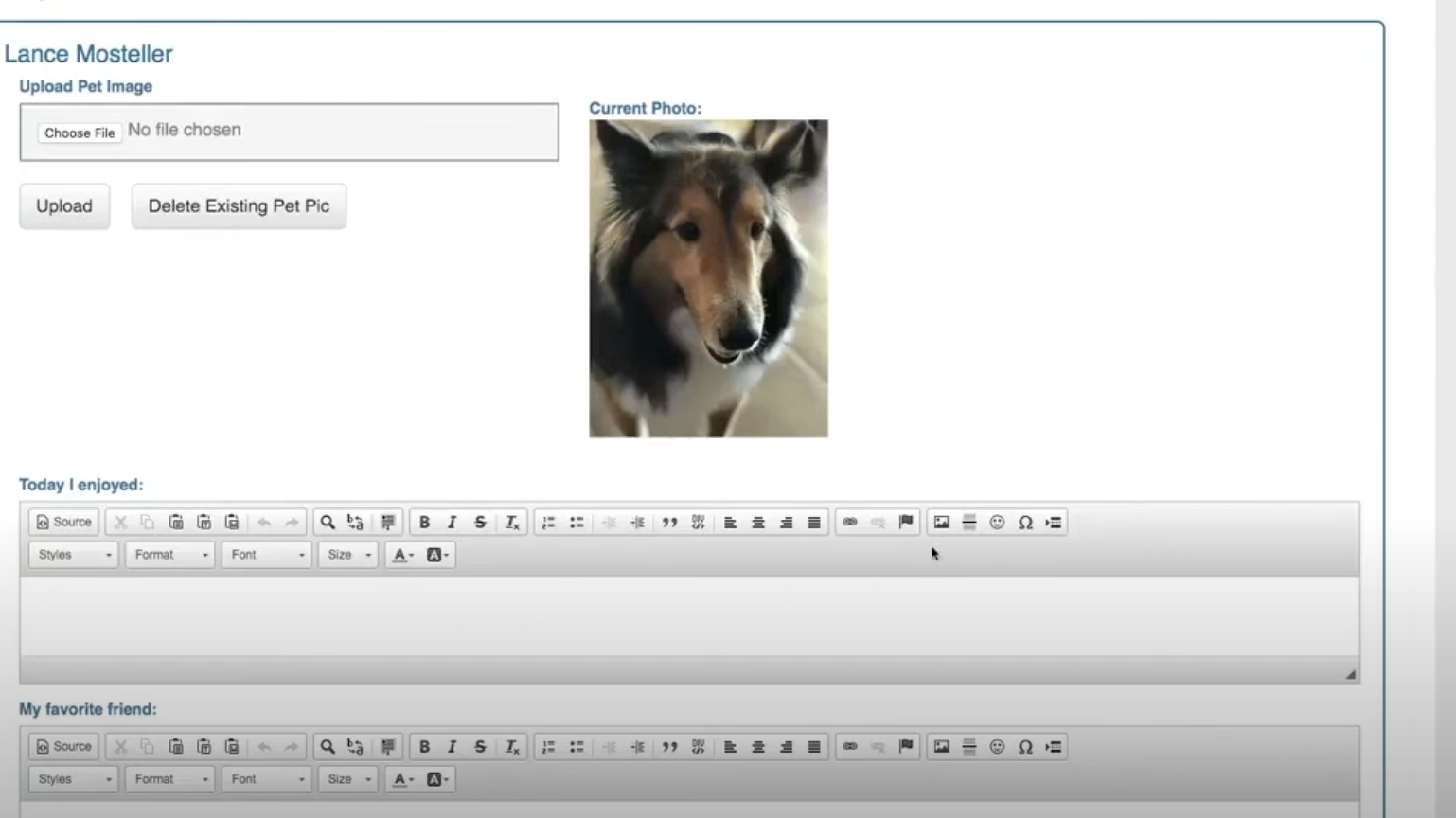



.jpg)


